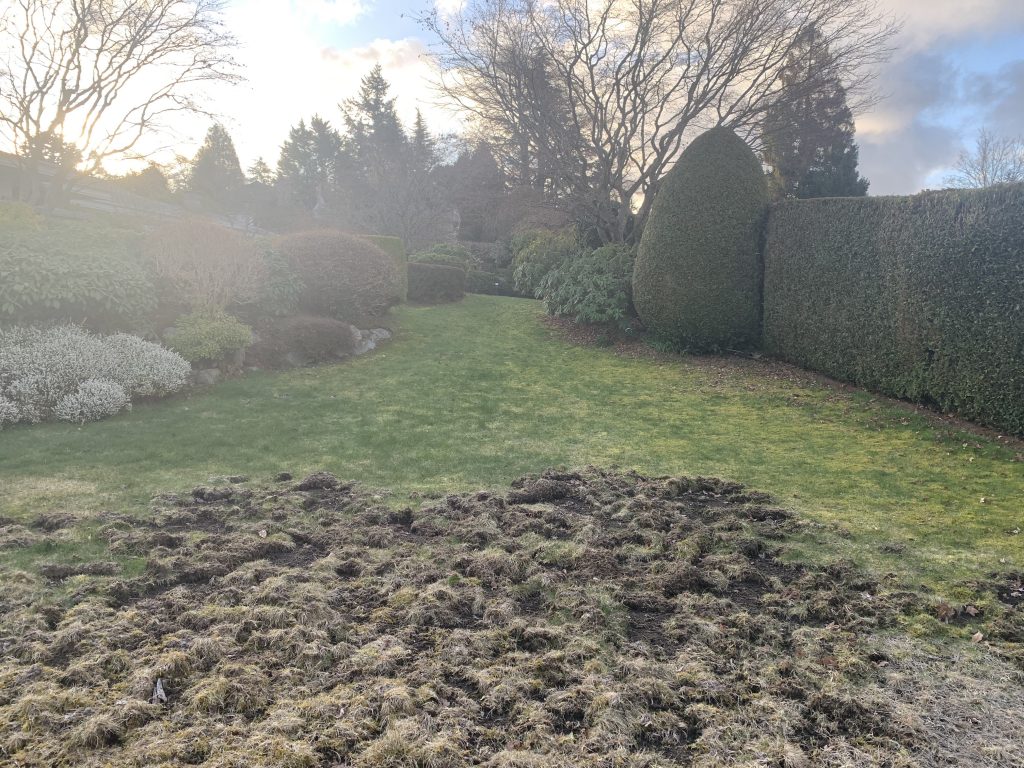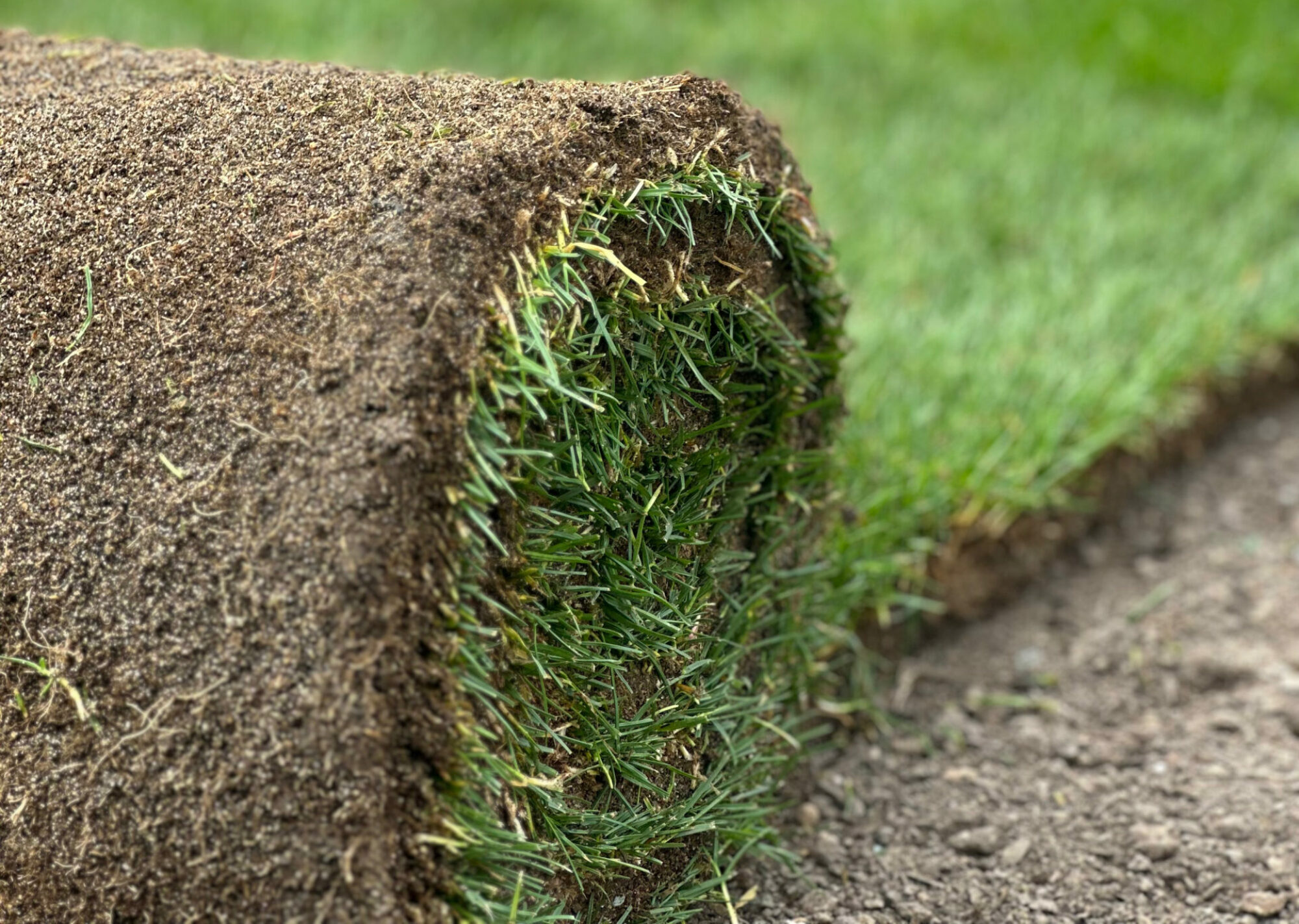
Your lawn is a living thing. It requires certain conditions to grow properly and thrive. let’s look at a list of things that require your lawn to grow:
- Sunlight
- Water
- Food
- Heat
- A non toxic environment
If you are missing any of the components above your lawn will fail to grow properly. In order to fix your lawn you need to decide where the deficiencies may be and take corrective action. Let’s explore each one and come up with some solutions to help solve your lawn problem:
Sunlight
Without sunlight your lawn will fail, perhaps slowly or maybe really fast. If you plant sod in a non direct sunlight area where moss was present prior to installation, the likelihood that your new sod will become thin and muddy looking after a few short weeks on the ground is fairly high. Lawns need direct sunlight for at least 50% of the day in order to survive the whole year. You need to either not plant grass is this area or plan on repairing this area frequently.
- Create more light (if possible)
- Do not plant grass is low light areas.
- Over seed frequently (4 times a year in growing seasons)
- Fertilize often.
- keep debris off the area.
- Apply lime.
- Do not mow short.
- Plant a shade tolerant type sod. Although this is not a complete solution to the problem it will increase your chances of survival throughout the entire year.
Some will accept the fact that the area where they have problems with low levels of light the sod does not make it through an entire year and re-plant sod every spring.
Watering Lawns and Sod
Your lawn requires water to grow or some grasses will go into a dormant state while others will die off and need to be replanted. Then on the other hand water soaked areas will kill off many grass types. Lawns prefer to have a well drained type soil that allow for constant moisture. This isn’t difficult to obtain if we construct the lawn area using the proper type and depth of soil to grow the new lawn upon. Many places today are concerned about using potable water as a source for lawn watering and this further complicates the issue of allowing your lawn to have water when it needs it most.
Corrective actions for water issues in Lawns:
- Allow for proper drainage in your lawn.
- Construct your lawn using a minimum of 3 inches of a well draining soil. 6 inches is best but can become very costly to construct. You will find that the deeper the well drained soil the less you need to water after your sod has established.
- Do not hand water your lawn, it’s not effective in providing deep watering less often. Unless you can use a fire hose with a high frequency output. Go ahead and test this in late summer, stand in one spot for 5 minutes and then scratch the surface to see how far the water has penetrated into the soil.
- Use a sprinkler or lawn irrigation system. Irrigation systems now have water sensors that can switch on and off with moisture content deep in the soil.
Your lawn will not require much water throughout the year if constructed properly, pay attention to the temperature of the ground to assess the amount of evaporation that may occur through the week.
Lawn Food
Feeding your lawn is a bit of a mystery for some and many are convinced that the name brand on the package will surely give them a better lawn. There are 3 basic chemicals that make up lawn fertilizer and each plays a role in the growth of your lawn area:
- N – Nitrogen
- P – Phosphorus
- K – Potassium
The items are expressed in order on the bag in terms of percentages, for example:
10-20-14
Gives us:
10% of the bag by weight is Nitrogen, 20% of the bag by weight is Phosphorus, 14% of the bag by weight is Potassium.
Now if we discover what each element does to our lawn:
N – Top growth
P- Root Growth
K – All round plant health
Scotts – It’s a name and does nothing
Remember the chemical type fertilizer is water soluble and will run out of your lawn if much water is applied. To apply a fertilizer to your lawn a good choice will be a slow release type fertlizer, this allow the grain to feed the plant slowly when exposed to moisture. This will also prevent runoff from your lawn area.
If your lawn is yellowing in growing season and not growing fast and your certain other elements are not affecting the growth of your lawn, apply a fertilizer to your lawn area. Using an equally balanced type fertlizer such as 20-20-20 or similar will provide you results within a week. Apply only 2-3 lbs. per 1000 square feet and do not apply less that 45 days between applications. If that does not produce results you may want to look into possibility of a toxic lawn area or incorrect ph balance meaning acidic or alkaline area.
Temperature of the soil
Lawns do not grow when the soil is cool, they sit dormant. As the temperature of the soil rises the lawn area will wake up from dormancy and begin to grow. Many are concerned in March that there must be something wrong with their lawn when if fact it’s still dormant from the winter. Before judging your lawn by its colour, wait until the soil temperature comes up in April.
Soil Ph balance of your lawn
It’s an okay practice to apply lime to your lawn once a year, but do you really know what you are doing? Many people do not have a clue what the ph balance of their soil is and yet run out and apply lime to their lawn, that’s what makes us all great scientists. When your ph balance of your lawn is off, the grass will not accept food and your lawn will not grow properly. Test your soil, if you have a problem that wasn’t solved by following the list above, get a baseline to start from. Please don’t randomly throw products on your lawn.
To figure out when to apply fertlizer, over seed, lime and when to water your lawn, please read:


